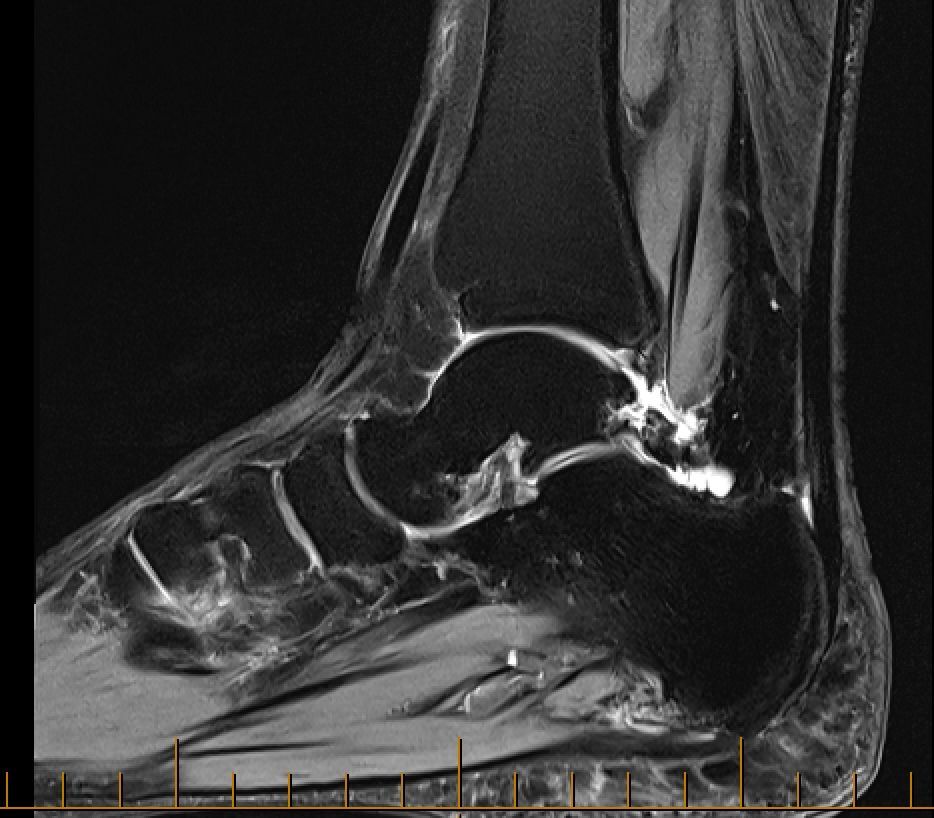Os Trigonum Syndrome
Os Trigonum Syndrome Information Sheet
What is Os Trigonum Syndrome?
Os Trigonum Syndrome is a painful condition caused by an accessory bone at the back of the ankle (called the os trigonum). This can irritate nearby structures or the ankle joint. This bone is present in 5–15% of the population, probably from birth, and usually does not cause problems. In some instances, especially during activities involving repeated loaded ankle movements, it can lead to inflammation, swelling, and pain. The condition is sometimes called “posterior ankle impingement,” and in more severe cases, treatment by an experienced
Orthopaedic Surgeon in Adelaide may be required to relieve symptoms and restore ankle function.

Impact of Os Trigonum Syndrome on Anatomy and Health
The os trigonum sits behind the ankle joint, near the heel bone (calcaneus) and the talus bone.
- When the os trigonum gets caught between bones and soft tissues during ankle movements (impingement), it can cause pinching, swelling, and irritation.
- This impingement causes pain, especially in movements like pointing the toes (plantarflexion), which is common in activities such as dancing, running, or kicking.
- Over time, untreated os trigonum syndrome can lead to chronic ankle pain, weakness, or reduced performance in physical activities.
Risk Factors for Os Trigonum Syndrome
People most likely to develop os trigonum syndrome include:
- Athletes: Ballet dancers, football players, soccer players, and runners who frequently point their toes downward.
- Young adults: Symptoms often appear in teenagers or young adults when the extra bone becomes problematic.
- Individuals with ankle injuries: A history of ankle sprains or trauma increases the risk.
Causes of Os Trigonum Syndrome
The main causes include:
- Repetitive ankle movements: Frequent pointing or flexing of the foot traps the os trigonum between ankle bones.
- Ankle injury: A sprain or trauma can loosen or irritate the bone and surrounding tissues.
- Overuse in sports or dance: High-intensity training, especially involving loaded and repetitive ankle plantarflexion (pointing the ankle/toes down)
- Inflammation of surrounding tissues: Swelling in tendons or ligaments around the ankle can worsen the impingement.
Symptoms of Os Trigonum Syndrome
- Deep pain at the back of the ankle, primarily when pointing toes or pushing off the foot.
- Swelling and tenderness at the back of the ankle.
- Stiffness and reduced flexibility, particularly in plantarflexion (pointing toes).
- Pain that worsens with activity such as running, jumping, or dancing.
- Clicking or catching sensation in the back or inside of the ankle.
Prevention of Os Trigonum Syndrome
While not always preventable, the risk can be reduced by:
- Gradual training progression: Avoid sudden increases in activity intensity or duration.
- Proper warm-up and stretching: Focus on ankle mobility and calf stretches before exercise.
- Strengthening exercises: Build ankle and foot muscle strength to support the joint.
- Listening to your body: Rest if ankle pain or swelling develops, rather than pushing through.
Types of Os Trigonum Syndrome
Os trigonum syndrome is generally classified based on how the condition presents:
- Acute Os Trigonum Syndrome: Triggered by a sudden ankle injury, such as a sprain or trauma, which irritates or displaces the os trigonum. Symptoms appear quickly and are often more intense.
- Chronic Os Trigonum Syndrome: Develops gradually due to repetitive stress on the ankle, particularly in athletes and dancers. Pain and swelling come and go but worsen with continued activity.
Diagnosis of Os Trigonum Syndrome
Diagnosis involves both a clinical assessment and imaging tests:
- Medical history and physical exam: Dr Graff asks about symptoms, activities, and injuries. Pain at the back of the ankle during toe-pointing is a key sign.
- X-rays: Identify the presence of an os trigonum bone.
- MRI scans: Provide detailed images of soft tissues, detecting inflammation or tendon irritation. Usually, the gold standard.
- CT scans: Useful if the os trigonum is fragmented or if bone detail is required.
- Diagnostic injection: A local anaesthetic may be injected into the area—if pain improves temporarily, os trigonum syndrome is likely the cause.
Treatment of Os Trigonum Syndrome
Non-surgical options (first-line treatment):
- Rest and activity modification: Avoid activities that worsen symptoms.
- Ice and anti-inflammatory medication: Reduce swelling and pain.
- Physiotherapy: Improves flexibility, strengthens surrounding muscles, and supports ankle recovery.
- Ankle supports or braces: Help stabilise the joint during healing.
- Corticosteroid injections: Provide temporary relief for persistent inflammation.
Surgical options (for severe or persistent cases):
- Os Trigonum Excision (See Os Trigonum Surgery): The extra bone is removed through minimally invasive or open surgery.
- Surgery is usually considered when symptoms last longer than 3–6 months despite non-surgical treatment.
What if Os Trigonum Syndrome is Untreated?
If left untreated, os trigonum syndrome can lead to:
- Chronic ankle pain: Ongoing discomfort that affects daily activities and sports.
- Reduced mobility: Difficulty pointing the foot, running, or jumping.
- Weakness and instability: The ankle may become more prone to sprains or further injury.
- Tendon irritation or tear: The flexor hallucis longus (FHL) tendon can become inflamed or damaged.
- Early joint wear: Long-term impingement may contribute to degenerative ankle changes or arthritis.
Useful Websites
Contact Us
If you want more information or have any questions or problems, please contact Dr Graff at
admin@christygraff.com or call the rooms at
0493 461 133.

